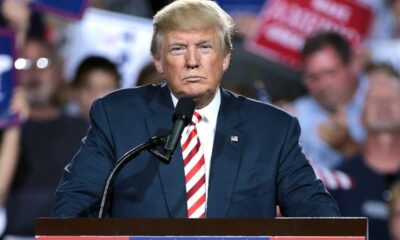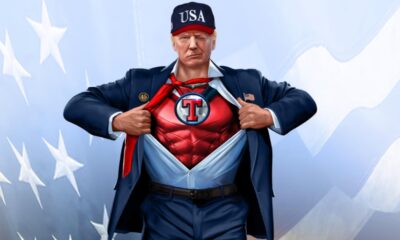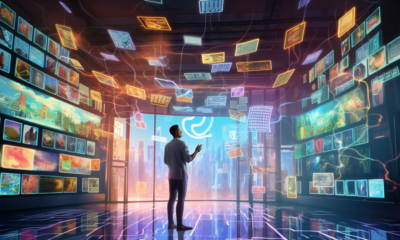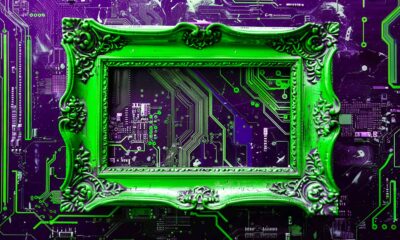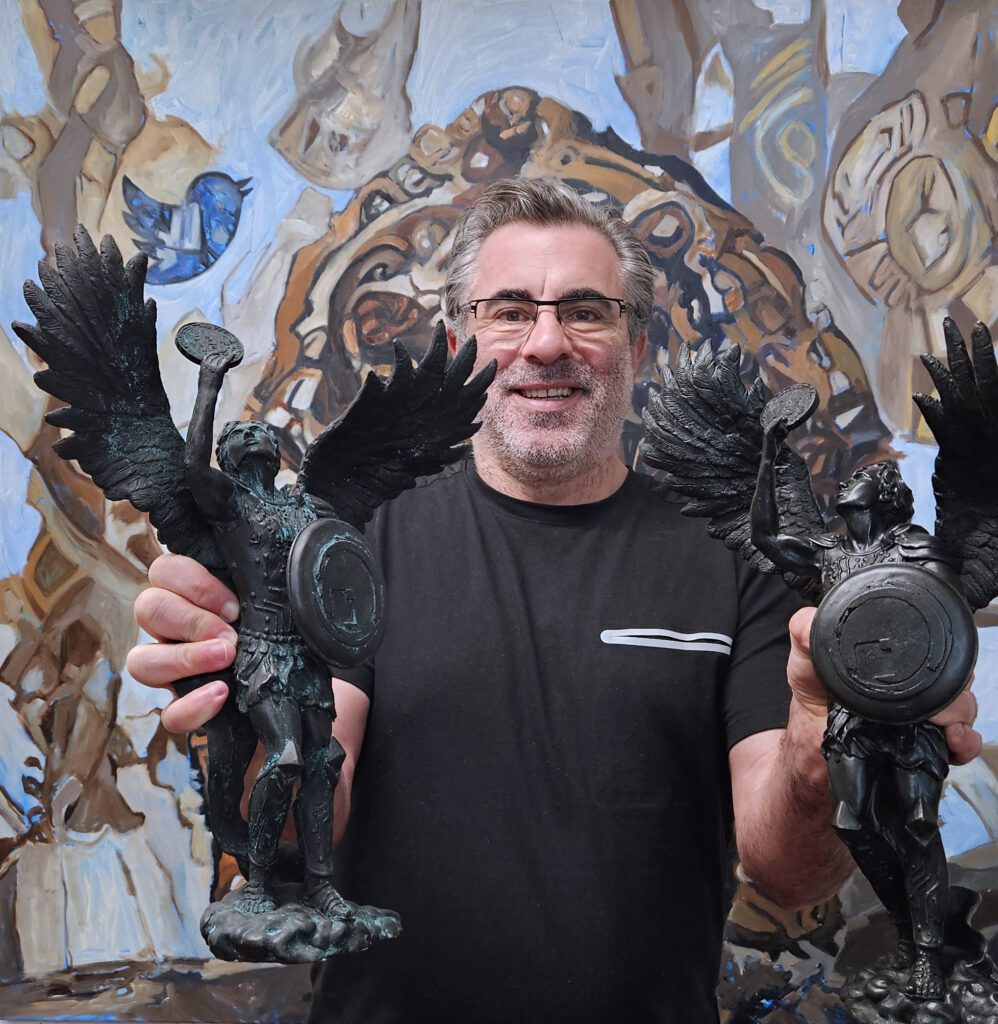Nfts
Les NFT font déjà partie de l’histoire de l’art
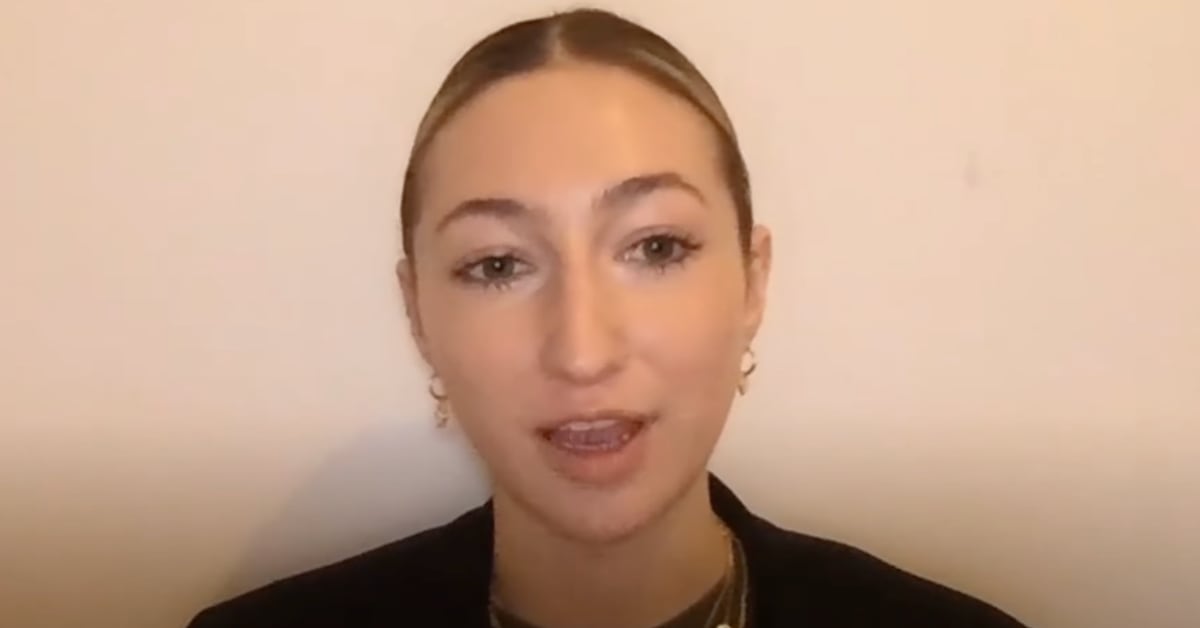
Il est parfois facile d’ignorer jusqu’où les NFT ont pénétré dans le monde de l’art, étant donné à quel point le grand public a rejeté la spéculation et le battage médiatique qui en sont venus à définir la classe d’actifs.
Madeleine Pierpont prendra la parole au Consensus 2024 en mai prochain à Austin, au Texas. Récupérez votre pass ici.
Mais c’est vrai. Il suffit de regarder ces points de données : les plus grandes maisons de ventes aux enchères du monde comme Sotheby’s et Christie’s organise toujours régulièrement des ventes NFT. Marque d’art et d’essai légendaire TASCHEN récemment a publié une histoire profonde de la scène artistique cryptographique. Les principaux acteurs du marché de l’art comme Artnet News et Art Review couvrent le rythme de l’industrie. Il existe des NFT accroché dans les musées autour du monde. Et chaque semaine, il y a des nouvelles d’un peintre, d’un groupe ou autre décide d’expérimenter avec tokenisation. Il y a ceux qui disent encore que « les NFT ne sont pas de l’art », mais le monde de l’art n’est généralement pas d’accord avec eux.
Peut-être que personne n’est aussi familier avec cette dynamique que Madeleine Pierpont, l’associée Web3 du Museum of Modern Art (MoMA), chargée de la tâche tout aussi enviable et peu enviable d’essayer d’attirer les visiteurs de musée potentiellement sceptiques via la programmation blockchain. Alors que les institutions artistiques ont souvent la réputation (méritée) d’être élitistes, exclusives et dépassées, Pierpont soutient que les NFT apportent un regain de dynamisme à l’industrie et suscitent l’intérêt pour l’art numérique.
« Nous définissons collectivement ce moment historique de l’art à mesure qu’il évolue. C’est un défi car l’écosystème, l’espace NFT, est si jeune. Il y a tellement d’artistes qui, j’espère, pourront faire partie de la collection du musée et être exposés à un moment donné, mais il s’agit d’un écosystème tellement jeune. Seul le temps nous le dira », Pierpont, qui s’exprimera au Conférence Consensus 2024 tenue du 29 au 31 mai 2024 à Austin, Texasa déclaré à CoinDesk dans une interview.
Dans une certaine mesure, les NFT et l’art forment une combinaison naturelle – et pas seulement parce qu’une technologie à usage général est essentiellement une toile vierge. Mais en tant que moyen d’échange, ils contribuent également à mieux connecter les mécènes aux créateurs et à renforcer la transparence sur un marché connu pour ses transactions obscures.
CoinDesk a rencontré Pierpont pour discuter de ses projets de cryptographie au MoMA (y compris “Cartes postales”), ce qui définit la scène artistique cryptographique aujourd’hui et comment c’était de travailler avec Yoko Ono.
Le terme « crypto-art » a-t-il un sens ?
Ouais. Est-ce un mouvement cohérent ?
Je pense qu’en tant qu’écosystème, nous pensons à l’espace Web3, nous sommes bien en avance sur le grand public en termes de compréhension des concepts fondamentaux de la blockchain, en termes de compréhension même de la manière d’interagir avec ou d’acheter un NFT ou d’interagir avec un portefeuille. Prenons un peu de recul : beaucoup de gens que je connais ont des opinions très arrêtées sur le fait que le NFT est en quelque sorte considéré comme un gros mot, et plaident parfois pour son abandon au profit du crypto-art.
Je pense que si nous continuons à changer de terminologie et de langage, cela ne fera que devenir encore plus confus. J’ai vraiment l’impression que nous avons presque une décennie d’avance sur ce que sera la compréhension du grand public. Et donc continuer à changer les termes ne fait que rendre la situation encore plus confuse lorsque les gens tentent d’entrer dans l’espace. Je suis donc convaincu que nous devrions nous en tenir au terme NFT, étant donné qu’en tant que terme NFT, il vient de voir plus de lumière. Il y a plus de visibilité autour de ce terme.
Dans une certaine mesure, vous dites qu’il faut simplement maintenir le cap parce que c’est le terme qui a fait son chemin au départ. Mais comme comparer les NFT aux inscriptions, ce qui me semble être un mot beaucoup plus descriptif – analogue à appeler une peinture une peinture parce qu’il s’agit de la méthode de création. Alors que, quoi est un token non fongible ?
Ouais, c’est intéressant. Cela soulève la question : comment définit-on réellement les NFT ? Par exemple, quel est le facteur déterminant de l’art cryptographique ou des NFT ? Mais les inscriptions, je n’ai jamais entendu ce terme auparavant.
C’est relativement nouveau. Ils ont commencé avec Bitcoin, mais vous pouvez inscrire des données sur de nombreuses blockchains. Ils sont parfois appelés ordinaux, d’après le protocole créé qui a permis le processus réel d’« inscription » des données. Mais alors ce qui en résulte, c’est l’inscription.
C’est intéressant, mais je pense qu’il y a des problèmes liés au contexte historique de l’art du terme inscription, car inscrire quelque chose physiquement est différent d’inscrire quelque chose dans un code.
C’est juste un point. Je suppose que c’est plutôt une métaphore.
Pour moi, cependant, je pense qu’il s’agit moins de terminologie que de trouver des moyens plus accessibles de communiquer simplement les principes fondamentaux de la technologie.
Il semble que la communauté artistique était prête à accepter et à adopter rapidement les NFT, tandis que le grand public les a presque immédiatement rejetés en raison de préoccupations concernant les coûts de l’énergie, la financiarisation galopante et la spéculation. Pensez-vous qu’étant donné la façon dont elles ont été présentées au monde au départ, il existe désormais un fossé insurmontable que ces choses doivent franchir pour être réellement adoptées par le public ?
C’est compliqué. C’est une question vraiment importante et à laquelle il est difficile de répondre. Et je pense qu’il est difficile de savoir ce que nous verrons l’année prochaine, et encore moins dans les cinq prochaines années. Il est définitivement impossible de prédire ce qui pourrait arriver dans une décennie. Ce qui est drôle, c’est à quel point l’art est opaque, d’une manière qui cache la même dynamique sur le marché de l’art traditionnel, entre guillemets. Il existe une forte division entre l’art lui-même et les sommes qui lui sont associées, en termes de ce qui est communiqué publiquement.
Oui, il y a eu une hyper-financiarisation dans l’espace NFT, mais l’argent n’est pas un gros mot dans l’art. L’argent et l’art sont liés. Les NFT, étant connectés de manière si transparente au contenu produit, ne sont pas une chose négative de mon point de vue. Cela dit, au cours des deux dernières années, en raison du marché baissier, il n’y a pas eu autant de chiffre d’affaires. Les gens ont eu le temps de vraiment se concentrer sur leurs projets, de passer plus de temps à construire et de comprendre ce qu’ils voulaient communiquer. Il y a moins de gens qui lancent quelque chose pour essayer de gagner beaucoup d’argent et qui se retirent ensuite de l’écosystème.
Je ne connais pas cela.
Je pense que c’était dans les années 70, l’artiste d’avant-garde Robert Rauschenberg a frappé l’un de ses plus grands collectionneurs, parce qu’il était en colère de ne pas tirer profit de la vente de ses œuvres sur le marché secondaire. C’est en quelque sorte ce moment tristement célèbre de l’histoire de l’art qui symbolisait à quel point tout était devenu financiarisé au milieu du 20e siècle, car à la fin de l’altercation, Scull a fait intervenir Rauschenberg et lui a dit quelque chose comme « Quand je gagne de l’argent, tu gagnes de l’argent » et ils fini par faire un câlin.
C’est intéressant. Les artistes recherchent toujours cette validation institutionnelle, mais cela peut parfois prendre beaucoup de temps. Ce qui est intéressant dans l’espace NFT, c’est que les collectionneurs sont très connectés aux artistes eux-mêmes. Parfois les artistes sont des collectionneurs et vice versa. Ce niveau de mécénat individuel est vraiment passionnant car il réduit la validation sur une base individuelle, permettant à la communauté de se développer en cercles concentriques. C’est plus compliqué et plus dynamique que sur le marché de l’art traditionnel.
Dans une certaine mesure, vous remplissez le rôle de validation de certains artistes, en choisissant certains artistes plutôt que d’autres au MoMA. Est-ce que cela vous stresse si vous faites les bons choix, en écrivant l’histoire de l’art à temps ?
Oh mon Dieu, je n’y ai jamais pensé dans ce contexte. Nous définissons collectivement ce moment historique de l’art à mesure qu’il évolue. Ce que je dirai, c’est que c’est un défi car l’écosystème, l’espace NFT, est si jeune. Il y a tellement d’artistes qui, j’espère, pourront faire partie de la collection du musée et être exposés à un moment donné, mais il s’agit d’un écosystème tellement jeune. Seul le temps nous le dira.
Je continue à nouer des relations pour essayer de comprendre comment nous voulons vraiment contextualiser l’art NFT et la communauté NFT par rapport au musée. C’est une manière très diplomatique de ne pas répondre à votre question parce que je ne pense pas nécessairement pouvoir parler de la validation d’un artiste plutôt qu’un autre.
Pourriez-vous nous parler de l’inspiration derrière les cartes postales ?
Pour prendre du recul, je suis arrivé à l’espace NFT dans le contexte de l’art et de la technologie. J’ai donc une formation en histoire de l’art, en art et en affaires, mais j’ai commencé à faire un stage pour Le prix Lumen. Toute leur mission est simplement de célébrer et de soutenir les artistes travaillant avec la technologie sur tous les supports. C’est comme ça que j’ai découvert la blockchain. Ce qui m’a vraiment enthousiasmé, c’est le pouvoir qu’il avait pour construire une communauté d’une manière aussi globale et démocratique. Cela connecte les gens à travers leurs passions, plutôt que, vous savez, à travers des emplacements géographiques.
Avec Postcard, nous avions un certain nombre d’objectifs différents, mais l’un d’entre eux était de mettre en évidence la manière dont la blockchain peut rassembler les gens. Nous avons demandé aux gens de travailler ensemble sur Postcards et voulions créer une expérience accessible qui, espérons-le, inciterait les gens à s’engager dans la blockchain. C’était une expérience entièrement Web3 sans portefeuille de garde. L’objectif était d’inspirer un dialogue et une conversation plus riche sur ce que la blockchain peut faire pour le grand public qui est probablement plus familier avec le Web2.
Ce fut également une excellente expérience d’apprentissage pour notre équipe, car je pense que nous avons mieux compris les obstacles auxquels nous sommes confrontés en essayant d’amener les gens à utiliser la technologie en général. Nous avons beaucoup appris sur ce que nous pourrions faire pour mieux faciliter ces conversations. L’un de mes espoirs cette année est d’essayer de créer des conversations IRL, car même si nous sommes dans l’espace numérique, il semble que les connexions les plus significatives qui se produisent se produisent lorsque les gens peuvent entrer dans une pièce et converser.
Affichez-vous des NFT à la maison ?
En fait, je n’en possède pas beaucoup, étonnamment. Mais j’aime vraiment Objets infinis — c’est une belle façon d’afficher les NFT. Je sais que les gens utilisent aussi des cadres Samsung. En fait, je ne pense pas qu’il existe vraiment une solution parfaite, transparente et facile à utiliser. C’est un peu une lacune du marché.
Certains NFT fonctionnent très bien uniquement sur votre téléphone ou sur votre ordinateur portable et n’ont pas nécessairement besoin de vivre dans un environnement affiché et d’autres sont vraiment beaux affichés sur un écran numérique. De nombreux artistes impriment leurs œuvres et vendent des versions numériques et physiques. J’ai toujours été généralement contre cela parce que je pense que quelque chose qui est nativement numérique devrait conserver sa valeur nativement numérique. Mais je vais peut-être changer d’avis à ce sujet.
Je ne pense pas qu’il existe encore un grand artiste NFT – comme un niveau Picasso. Ce qui m’inquiète, c’est que les artistes ne sont pas assez bizarres. La scène NFT est-elle vraiment assez radicale ?
C’est une question vraiment intéressante. En repensant à quelques années jusqu’en 2020, c’était vraiment cool de voir cet espace se développer si rapidement. C’était vraiment cool de voir des artistes se faire un nom en produisant des choses qui passionnaient les gens et en les publiant sur Twitter/X et en créant une communauté organique. Il semblait qu’il y avait beaucoup plus d’expérimentations à cette époque. C’est une façon grossière de le dire, mais les gens se jetaient sur le mur en disant « c’est moi, c’est mon art, c’est ce que je veux faire ». Cela a évolué avec l’hyper-financiarisation de certains projets NFT, lorsque certains sont peut-être devenus plus modestes dans ce qu’ils ont produit parce qu’ils voulaient s’assurer qu’ils apaisaient toujours leur base de collectionneurs et produisaient des choses qui excitaient leur communauté. Je pense qu’il y avait un élément du genre, si ce n’est pas cassé, il ne faut pas le réparer en termes de production.
Mais c’est bien sûr un espace innovant. Il y a toujours des expérimentations passionnantes.
Je ne peux pas parler pour chaque artiste. Mais il y a quelques années, c’était un peu plus sauvage. Les choses semblent un peu plus calmes en ce moment, mais ce n’est peut-être que le moment. Il se passe toujours des choses nouvelles, géniales et excitantes dans l’espace. Parfois, ces choses sont moins visibles. Mais il est encore temps pour que davantage de personnes entrent dans l’espace. Comme je l’ai déjà dit, c’est un jeune écosystème. Pour moi, l’art le plus excitant consiste en fait à utiliser la blockchain d’une manière ou d’une autre dans la création de l’art lui-même – qui marie la blockchain et l’art conceptuel.
vous voulez rajouter quelque chose?
Puis-je juste faire une prise rapide ?
L’exposition SOUND MACHINES est actuellement en direct sur Fichier sauvage, qui présente les œuvres de sept artistes. Le SOUND PIECE V public de Yoko Ono est également ouvert au public pour qu’il puisse y participer à perpétuité. J’encourage tout le monde à y jeter un œil et à s’engager !
Nfts
NFTs Maintain Upward Momentum, Sales Volume Surpasses $107 Million
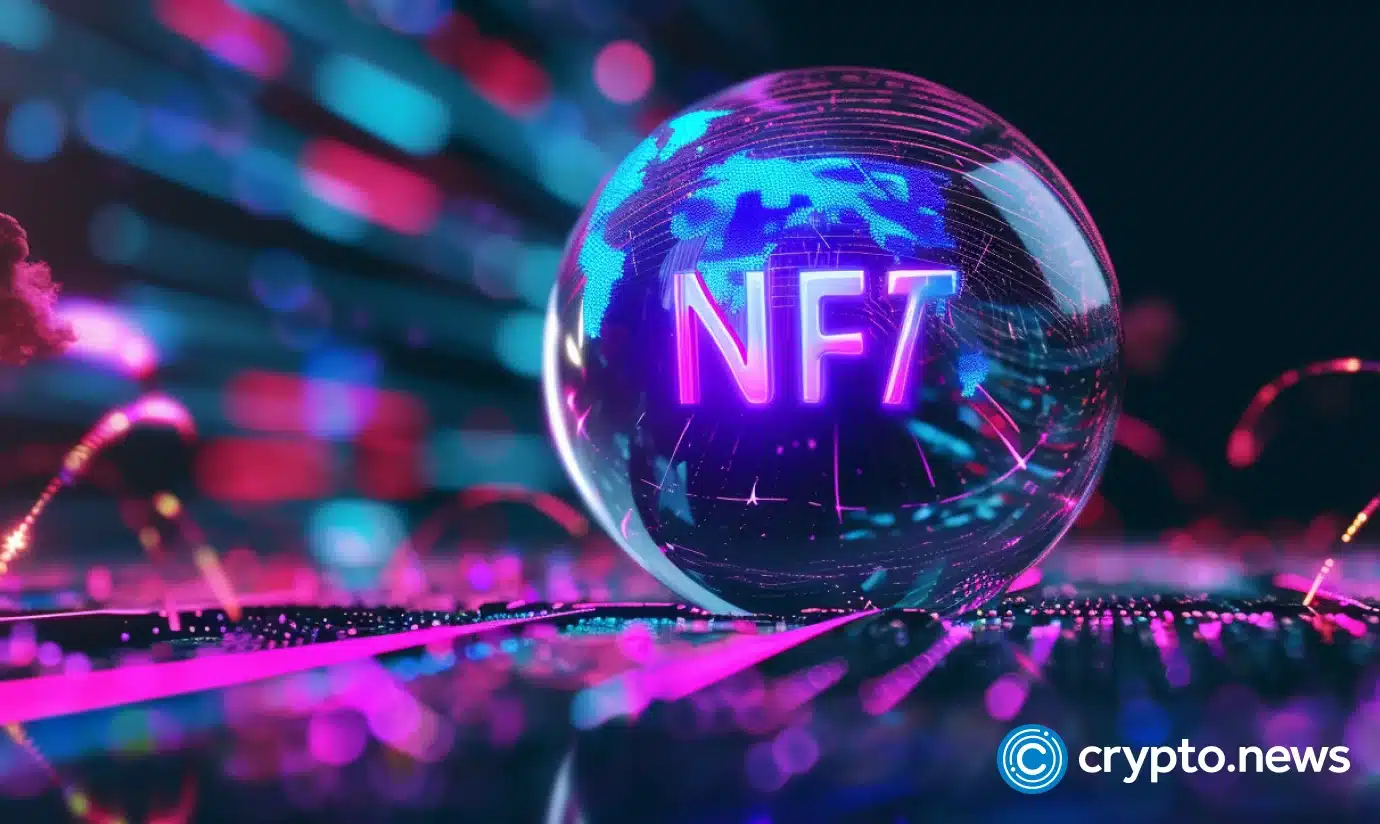
Non-fungible tokens, or NFTs, saw sales volume surge for the second week in a row, reaching $107 million, an increase of 8.5%.
A substantial increase in the number of NFT Buyers accompanied this growth, reaching 488,141 — a staggering increase of 89.56%.
On the other hand, the number of NFT sellers also increased by 69.8%, totaling 198,450, signaling an improved business environment and increased market engagement.
Below is a look at what happened in the NFT market over the past week.
Ethereum Maintains Leading Position While Solana and Bitcoin Follow
Blockchains by weekly NFT sales volume | Source: CryptoSlam
Over the past few weeks, Ethereum (ETH) continued to dominate the NFT market with $36.6 million in total sales, driven by 35,236 buyers, a 46.31% increase from the previous week.
Solana (GROUND) has emerged as a serious competitor, recording total revenue of $26.15 million, thanks to a substantial 114.07% increase in the number of buyers.
Bitcoin (Bitcoin) The NFT market also saw a notable surge, with total sales reaching $21.4 million, thanks to a staggering 222.29% increase in buyers.
Polygon (MATICS), which had the second best performance the previous week, saw its total sales volume drop by more than 15%, dropping it to 4th place just ahead of Immutable (IMX).
Other notable performances were achieved by Zora and Blast, which recorded the two largest percentage increases in sales volume, at 463% and 227% respectively.
Best Collections: Solana Monkey Business Shines
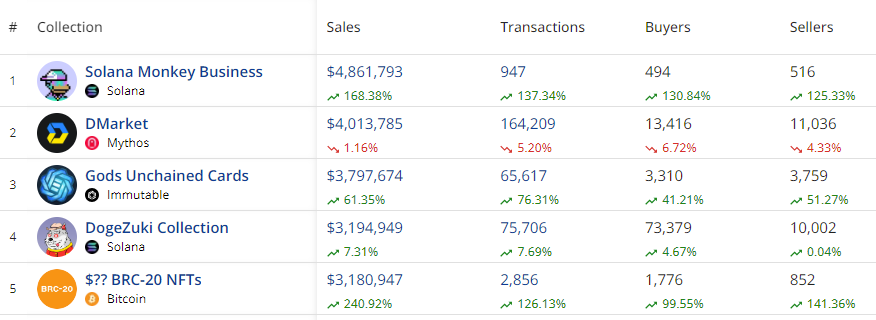 Ranking NFT collections by weekly sales volume | Source: CryptoSlam
Ranking NFT collections by weekly sales volume | Source: CryptoSlam
Among the top NFT collections, Solana Monkey Business came out on top with $4.86 million in sales, an increase of 168.38%. The collection also saw a significant increase in transactions (137.34%) and buyers (130.84%).
The DMarket collection on the Mythos blockchain, which recorded $4.01 million in sales, came in a close second. Interestingly, this is the only collection among the top 5 by sales volume to see a decline in the number of transactions and buyers.
Immutable’s Gods Unchained cards also made headlines with $3.8 million in sales, an increase of 61.35%. This collection saw notable growth in both transactions (76.31%) and buyers (41.21%), a testament to the growing popularity of blockchain-based trading cards.
Best-Selling NFTs and Fan Tokens
In terms of individual sales, Ethereum’s Autoglyphs #167 led with a sale of $274,561, followed by Bitcoin’s Protoshrooms with $148,574. Other notable sales included BNB’s kNFT: Locked kUSDT and Arbitrum’s Umoja Synths, highlighting the diversity and breadth of the NFT market across different blockchains.
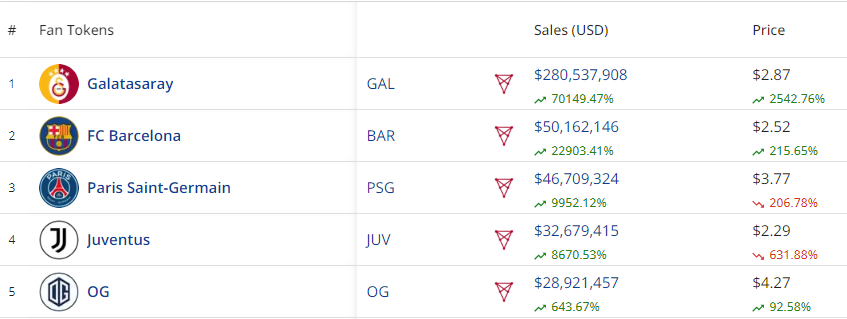 Top 5 Fan Tokens by Sales Volume
Top 5 Fan Tokens by Sales Volume
As can be seen in the table above CryptoSlamFan tokens also continued to see explosive growth, with Galatasaray’s token on the Chiliz blockchain recording a turnover of $280.5 million. This reflects an increase of 70149.47%.
FC Barcelona and Paris Saint-Germain followed with substantial sales volumes, indicating the growing popularity of sports-related NFTs.
Market consequences
The latest performance of the NFT market marks a significant turnaround, demonstrating resilience and renewed investor interest after a period of declining sales volumes.
This is the second consecutive week of improved sales, suggesting a potential upward trend. It is worth noting that this resurgence comes amid a broader recovery in the cryptocurrency market, which is currently valued at $2.55 trillion.
Major cryptocurrencies like Bitcoin, Ethereum, BNB, and Solana have all registered Prices have risen by double digits over the past week, further fueling optimism in the digital asset sector.
The correlation between rising cryptocurrency prices and the recovery of the NFT market could be an indication of strengthening investor confidence, setting a positive tone for the coming weeks.
Nfts
APENFT’s One-Day Trading Volume Hits $16.67 Million (NFT)

APENFT (NFT) fell 0.3% against the U.S. dollar in the 24-hour period ending at 9:00 a.m. ET on July 21. APENFT has a market cap of $8.54 million and $16.67 million worth of APENFT was traded on exchanges over the past day. Over the past week, APENFT has been trading 3.1% lower against the US Dollar. One APENFT token can now be purchased for around $0.0000 or 0.00000000 BTC on major cryptocurrency exchanges.
Here’s how other cryptocurrencies performed over the past day:
- KILT Protocol (KILT) is up 1.9% against the dollar and is now trading at $0.20 or 0.00000302 BTC.
- Aidi Finance (BSC) (AIDI) fell 2.2% against the dollar and is now trading at $0.0000 or 0.00000000 BTC.
- Zoo Token (ZOOT) fell 2.2% against the dollar and is now trading at $0.0652 or 0.00000239 BTC.
- CareCoin (CARES) fell 2.2% against the dollar and is now trading at $0.0809 or 0.00000297 BTC.
- Kitty Inu (KITTY) rose 1.9% against the dollar and is now trading at $95.84 or 0.00338062 BTC.
- Hokkaidu Inu (HOKK) rose 1.2% against the dollar and is now trading at $0.0004 or 0.00000001 BTC.
- Jeff in Space (JEFF) fell 2.2% against the dollar and is now trading at $2.75 or 0.00010076 BTC.
- Lumi Credits (LUMI) fell 0.7% against the dollar and is now trading at $0.0128 or 0.00000019 BTC.
- AXIA Coin (AXC) fell 0.1% against the dollar and is now trading at $13.43 or 0.00048094 BTC.
About APENFT
APENFT launched on March 28, 2021. The total supply of APENFT is 999,990,000,000,000 tokens and its circulating supply is 19,999,800,000,000 tokens. The official website of APENFT is apenft.orgThe official APENFT Twitter account is @apenftorg and his Facebook page is accessible here.
According to CryptoCompare, “APENFT is a blockchain-based platform created by the APENFT Foundation to create, buy, sell, and trade non-fungible tokens (NFTs) on the TRON and Ethereum networks. It allows for the ownership and trading of unique digital assets such as artwork, music, videos, and more. It also provides tools for artists and creators to create and promote their own NFTs, as well as participate in community events and governance.”
APENFT Token Trading
It is not currently generally possible to purchase alternative cryptocurrencies such as APENFT directly using US dollars. Investors wishing to acquire APENFT must first purchase Ethereum or Bitcoin using an exchange that deals in US dollars such as CoinbaseGDAX or Gemini. Investors can then use their newly acquired Ethereum or Bitcoin to purchase APENFT using any of the exchanges listed above.
Receive daily news and updates from APENFT – Enter your email address below to receive a concise daily summary of the latest news and updates for APENFT and associated cryptocurrencies with FREE CryptoBeat Newsletter from MarketBeat.com.
Nfts
Next US Vice President JD Vance Holds Bitcoin and NFTs, Expected to Boost MATIC and Algotech Post-Election
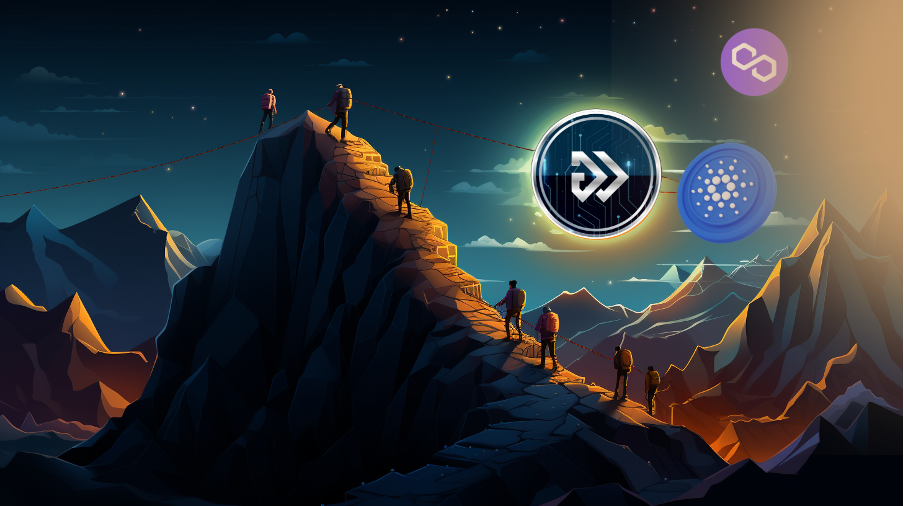
The blockchain technology landscape is about to transform as JD Vance, the likely next US vice president, emerges as a strong advocate for digital assets. Recent reports suggest that Vance not only holds Bitcoin (BTC) and NFTs, but is also willing to back promising blockchain initiatives like Polygon (MATIC) and Algotech (ALGT) post-elections.
JD Vance’s Cryptocurrency Investments Highlight Shift in Government Perspective
U.S. Senator JD Vance has garnered considerable attention for his recent investments in Bitcoin (BTC) and NFTs. Public records indicate that he owns between $100,000 and $250,000 worth of Bitcoin (BTC), indicating considerable interest in the success of the cryptocurrency market. This level of financial commitment from a high-profile government figure is unprecedented and underscores the growing credibility and promise of digital assets.
JD Vance’s interests extend beyond Bitcoin (BTC) to non-fungible tokens (NFTs), with reports suggesting his involvement in acquiring notable pieces from renowned collections. While the details of his NFT portfolio remain unknown, those who know the senator confirm his foray into this field.
This exploration of NFTs underscores Vance’s openness to exploring innovative and artistic applications of blockchain technology beyond cryptocurrencies’ typical role as assets or means of exchange. Vance’s involvement with cryptocurrency stands in stark contrast to the views of many of his peers in Congress, who often express doubt or hostility toward digital currency.
His direct involvement as an investor and user of these technologies gives him a unique perspective on their potential benefits and drawbacks. This practical understanding is likely to influence his stance on policy and regulation should he take on the role of vice president.
Polygon (MATIC) Hits $0.53, Eyes Breakout Amid Market Slowdown
The Vance administration, known for its support for cryptocurrencies, could significantly boost Polygon (MATIC), a major Ethereum layer 2 scaling project. MATIC has already attracted the attention of the developer community for its innovative solutions.
Even so, regulatory uncertainties have slowed widespread adoption and integration with traditional financial systems. Vance’s backing could serve as a driving force to unlock Polygon’s untapped capabilities.
A recent look at the MATIC token shows that its current trading value is $0.53, which represents an increase of over 2% in the last 24 hours. This surge coincides with a downturn in the broader cryptocurrency market, signaling solid fundamental strength and a growing sense of confidence among investors regarding Polygon’s future prospects.
Based on technical indicators, MATIC appears to be facing a resistance level that has persisted for several months, hinting at a potential breakout that could propel prices towards the previous peak around $1.29.
MATIC’s cutting-edge technology has taken a significant leap forward with the introduction of the Plonky3 zero-knowledge proof system. This innovation in zk-rollup technology is set to revolutionize MATIC’s scalability and efficiency, cementing its position as the premier choice for developers and enterprises.
Algotech (ALGT) Eyes $1 Price Hike When Its Exchange Launches
Algotech, a project that has attracted the interest of crypto enthusiasts and JD Vance, aims to transform algorithmic trading in the cryptocurrency space. Through the use of artificial intelligence and machine learning, Algotech offers advanced trading strategies to ordinary investors.
The platform’s innovative approach and ambitious roadmap are in line with JD Vance’s goal of driving financial innovation and making sophisticated investment tools more accessible to all. Algotech’s decentralized structure stands out, aligning perfectly with the core principles of blockchain technology.
By cutting out the middleman and giving users direct authority over their trading algorithms, Algotech embodies the essence of financial independence advocated by many in the crypto community, including Vance. This common ground makes Algotech a natural choice for endorsement by crypto-friendly leadership.
As Algotech’s pre-sale gains momentum, with over $9.6 million in funding, excitement is building for its official launch. Analysts have set lofty price targets, with some even suggesting that ALGT could surge to $1 shortly after it goes public.
While it’s wise to approach these predictions with caution, the combination of Algotech’s cutting-edge technology and the potential backing of key figures like JD Vance could pave the way for significant growth and adoption.
Learn more:
Disclaimer: This is a paid release. The statements, views, and opinions expressed in this column are solely those of the content provider and do not necessarily represent those of Bitcoinist. Bitcoinist does not guarantee the accuracy or timeliness of any information available in this content. Do your research and invest at your own risk.
Nfts
OG Crypto Artist Trevor Jones Unveils Groundbreaking Collection of Ordinals | NFT CULTURE | NFT News | Web3 Culture
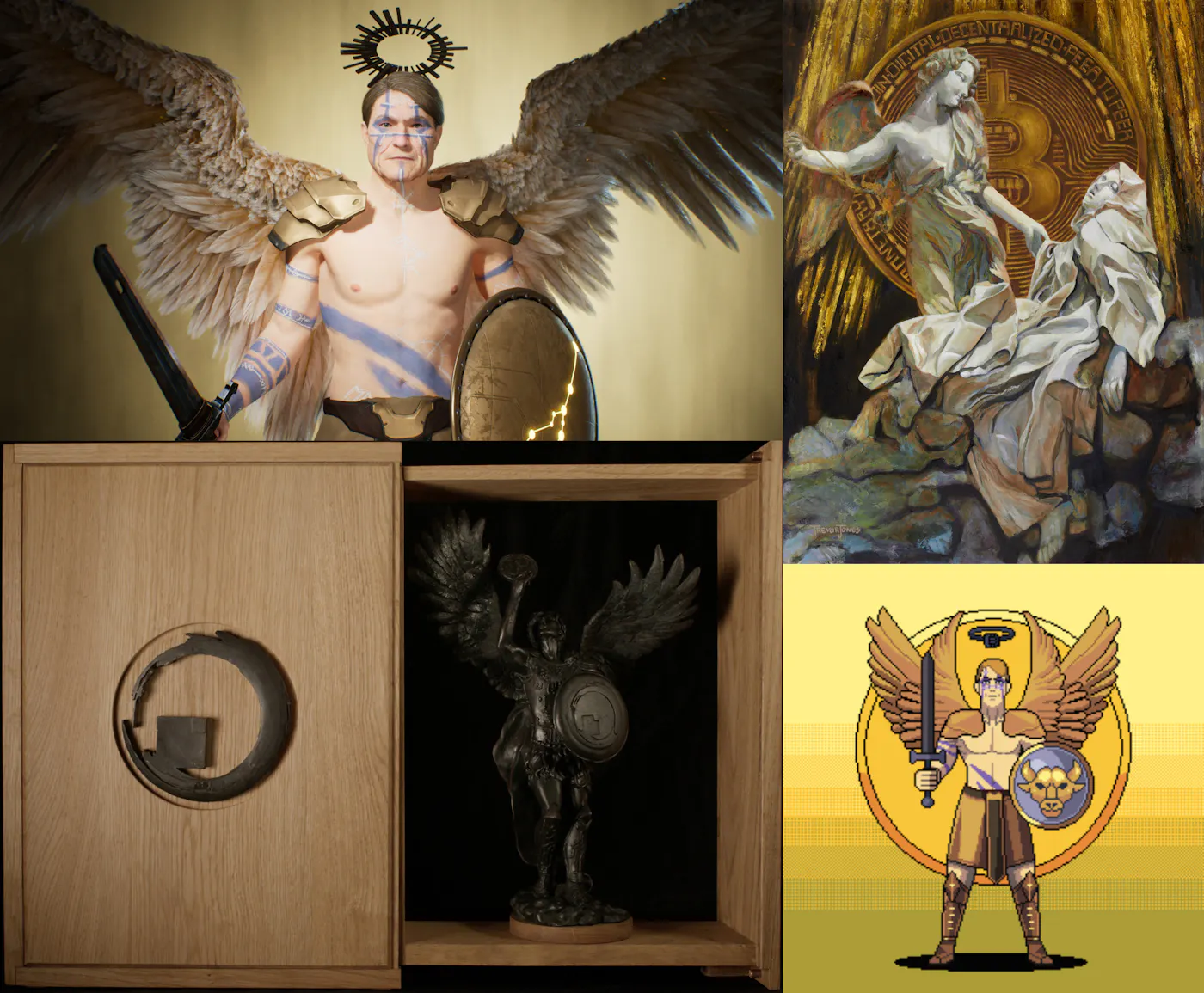
Trevor Jones’ New Genesis BTC Collection: CryptoAngels
Known for his innovative blend of physical and digital art, Trevor Jones continues to push the boundaries of the NFT space with his latest collection, CryptoAngels. Since his foray into Bitcoin-themed artwork in 2017, Jones has garnered a significant following, cementing his reputation with record-breaking sales and community events.
The Bitcoin Angel Journey
In 2021, Jones made headlines with his Bitcoin Angel open edition, selling 4,158 editions for an incredible $3.2 million in just seven minutes. This success paved the way for his latest venture, where he combines art, community, and technology in new ways. His annual Castle Parties, celebrating art, culture, and charity, have further cemented his place in the Web3 world.
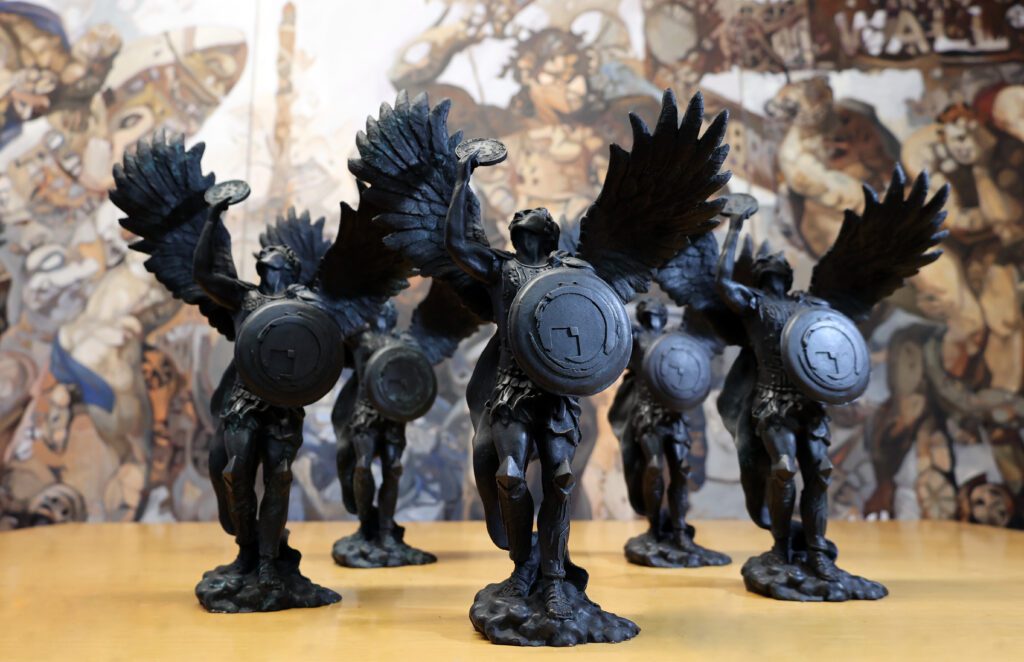
CryptoAngels Collection Review
Jones’ CryptoAngels collection is divided into two main stages: Archangels and CryptoAngels.
- Step 1: The Archangels The initial phase, Archangels, saw 21 collector’s packages sold for 87.9 ETH (approximately $335,291). Each package included:
- A physical bronze sculpture of the Bitcoin angel
- A 3D NFT avatar
- An Archangel Ordinal
Esteemed collectors like ModeratsArt, Batsoupyum, Bharat Krymo, Blondie23LMD, and 1Confirmation now lead the CryptoAngel army as Archangel Collectors.
- Step 2: CryptoAngels The second phase, set to launch on August 7, features 7,777 unique CryptoAngels. These will be available for minting via OrdinalsBot, starting with a whitelisting phase. Each CryptoAngel is distinct and named by Jones himself. The collection is organized into 21 cohorts, each associated with one of Archangel’s collectors, fostering sub-communities within the larger collection. Additionally, there are seven 1/1 CryptoAngels, making them exceptionally rare and not aligned with a cohort.
Connecting Bitcoin and Art
Jones, who has been a strong Bitcoin supporter since mid-2017, expresses his deep connection to the crypto community. He sees the CryptoAngels collection as a tribute to that community, bringing his iconic Bitcoin Angel motif to the blockchain.
“I have been personally investing in Bitcoin since mid-2017 and its ethos quickly inspired me in my crypto art journey. I have followed the growth of Ordinals since its inception and the CryptoAngels collection is my offering to a community that has welcomed me with open arms and given me the opportunity to bring my Bitcoin Angel motif to the chain where it was always meant to be,” said artist Trevor Jones.
Collectors’ opinions
“Bitcoin’s OG artist Trevor Jones, behind the Bitcoin Angels depositing ordinals on the immutable chain is a match made in crypto-native art heaven.” – Bharat Krymo (@krybharat – Archangel Collector)
“The 2018 Bitcoin Angel oil painting is one of the first crypto tributes to Bitcoin, so CryptoAngels on Ordinals is a natural extension of Trevor’s artistic journey” – batsoupyum (Archangel Collector)
Interactive experience and limited editions
Rounding out the collection, 21 special Angels will be available to mint for $7 each on Base, playable in the exclusive retro arcade game, Dante’s Pixel Inferno. The game challenges players to guide their Angel through the nine circles of Fiat Hell, collecting Bitcoin and earning rewards. Each Angel in the game has unique abilities and weapons.
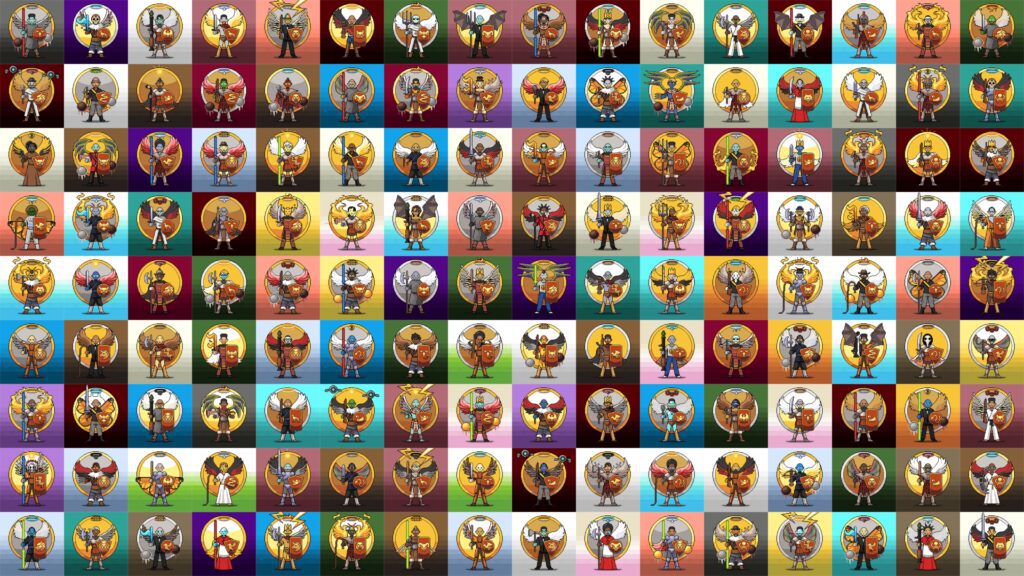

Whitelisting Opportunities and Community Engagement
Whitelisting (WL) opportunities are available through community partnerships, existing Bitcoin Angel OE and Trevor’s Ascended Angels holders, and weekly giveaways. To stay up to date and secure a spot on the whitelist, join Trevor Jones’ active Discord community.
TL;DR
Trevor Jones is launching the CryptoAngels collection on August 7th, building on his Bitcoin Angel legacy. Split into two stages, Archangels and CryptoAngels, the collection includes unique NFTs and physical artworks, fostering strong community connections. Exclusive gaming experiences and limited minting opportunities enhance engagement. Join the Discord for your chance to win.
-
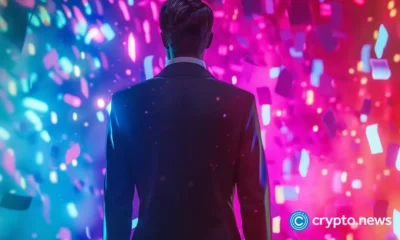
 Nfts12 months ago
Nfts12 months agoShardLab Launches ZK-Based Tool for Digital Identity and NFT Vouchers
-
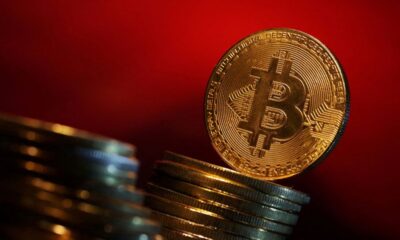
 News1 year ago
News1 year agoWallet recovery firms are abuzz as stranded cryptocurrency investors panic in the bitcoin boom
-
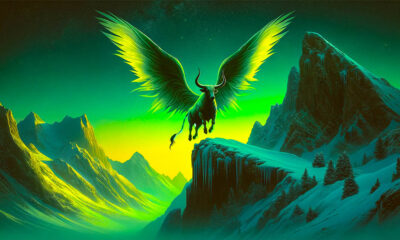
 Bitcoin12 months ago
Bitcoin12 months agoBitcoin, Ethereum, Solana and Cryptocurrency Markets Look Ready to ‘Send’ as Stars Align, According to Investor Chris Burniske
-
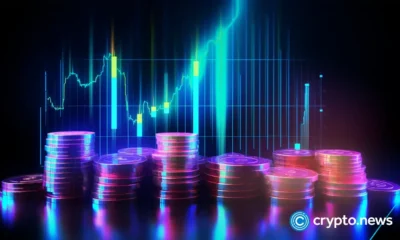
 Altcoins11 months ago
Altcoins11 months agoThree Altcoins Poised for Significant Growth in 2024: ETFS, OP, BLAST
-
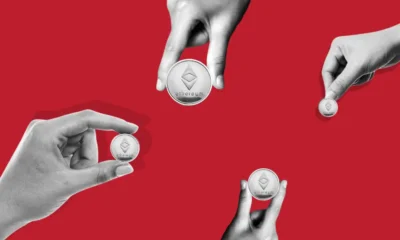
 Altcoins11 months ago
Altcoins11 months agoAccumulate these altcoins now for maximum gains
-
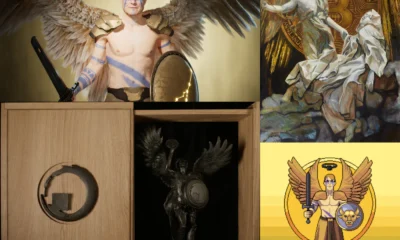
 Nfts12 months ago
Nfts12 months agoOG Crypto Artist Trevor Jones Unveils Groundbreaking Collection of Ordinals | NFT CULTURE | NFT News | Web3 Culture
-

 Bitcoin12 months ago
Bitcoin12 months agoBillionaires are selling Nvidia stock and buying an index fund that could rise as much as 5,655%, according to some Wall Street analysts
-
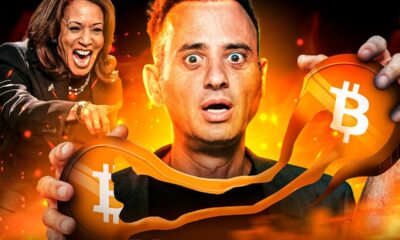
 Videos8 months ago
Videos8 months agoKamala just won the boner! [Bad For Crypto]
-
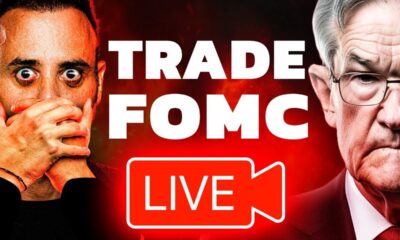
 Videos1 year ago
Videos1 year agoLIVE FOMC 🚨 Could be CATASTROPHIC for Altcoins!
-

 Videos1 year ago
Videos1 year agoSTOCK MARKET FUD! ⚠️ [Why This Is GREAT For Bitcoin Traders!]
-

 Videos1 year ago
Videos1 year agoAttention: a historically significant BITCOIN signal has just appeared!
-

 News1 year ago
News1 year agoA Guide for Newcomers & Beginners – Forbes Advisor


